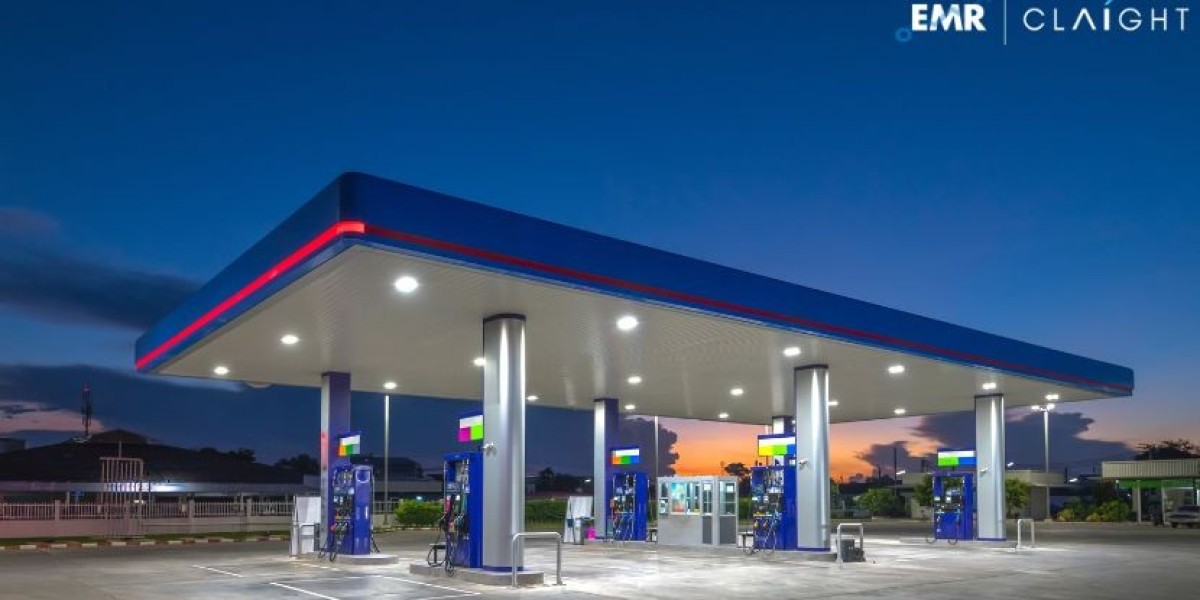The Saudi Arabia fuel station market size is set for significant expansion over the next decade, driven by a growing population and a rapidly expanding automotive sector. With a projected compound annual growth rate (CAGR) of 7.5% from 2025 to 2034, the market presents ample opportunities for investors, businesses, and stakeholders. This growth reflects not only the increasing demand for traditional fuels but also the emergence of alternative energy solutions and innovative service offerings at fuel stations.
In this article, we explore the key drivers, challenges, trends, and segments shaping the Saudi Arabian fuel station market while providing insights into its future trajectory.
Key Drivers of Growth in the Saudi Arabia Fuel Station Market
1. Rapid Growth of the Automotive Sector
Saudi Arabia’s automotive sector is expanding rapidly, fueled by rising incomes, urbanization, and government investments in infrastructure. The country’s Vision 2030 initiative, which focuses on diversifying the economy, has stimulated growth in various industries, including transportation. With more vehicles hitting the roads, the demand for fuel stations is naturally increasing.
Additionally, the influx of electric and hybrid vehicles is diversifying fuel station requirements, prompting the development of facilities that cater to both traditional fuel and electric vehicle (EV) charging.
2. Population Growth and Urbanization
Saudi Arabia’s population is growing steadily, with urban areas like Riyadh and Jeddah experiencing rapid development. This urbanization has led to increased vehicular traffic and a higher demand for convenient and accessible fuel stations. As new residential and commercial developments emerge, fuel stations are expanding their presence to cater to these growing needs.
3. Tourism and Economic Diversification
The government’s push to make Saudi Arabia a global tourism hub is contributing to the growth of the fuel station market. The expansion of domestic travel and the construction of mega-tourism projects such as NEOM and the Red Sea Project are driving greater demand for transportation infrastructure, including fuel stations.
4. Integration of Convenience Services
Modern fuel stations in Saudi Arabia are evolving into multi-purpose hubs that offer a range of services beyond fuel. Many stations now include convenience stores, cafes, car washes, and quick-service restaurants, creating additional revenue streams. These enhanced service offerings cater to consumer demand for convenience and contribute to the overall growth of the market.
Emerging Trends in the Saudi Arabia Fuel Station Market
1. Growth of Alternative Fuels and EV Infrastructure
As Saudi Arabia commits to sustainability goals under Vision 2030, the country is investing in renewable energy and reducing its reliance on fossil fuels. Fuel stations are beginning to incorporate infrastructure for alternative fuels such as compressed natural gas (CNG) and hydrogen, along with EV charging stations.
This transition is creating opportunities for innovation and investment in clean energy solutions, positioning Saudi Arabia as a leader in sustainable transportation infrastructure.
2. Smart and Digitized Fuel Stations
The adoption of digital technologies is transforming fuel stations across Saudi Arabia. Features such as mobile payment options, automated refueling systems, and loyalty programs are enhancing customer experiences. Fuel stations are also leveraging data analytics to optimize operations and personalize services, making them more competitive in an increasingly tech-savvy market.
3. Expansion of Premium Services
Premium services, such as VIP lounges, premium fuel options, and car detailing, are becoming popular among high-income consumers in Saudi Arabia. This trend reflects a growing demand for luxury and exclusivity, creating opportunities for fuel stations to differentiate themselves and attract affluent customers.
4. Sustainability Initiatives
Fuel station operators are adopting environmentally friendly practices, such as installing solar panels to power their operations and offering biodegradable products in their convenience stores. These sustainability initiatives align with global trends and appeal to environmentally conscious consumers.
Challenges in the Saudi Arabia Fuel Station Market
1. High Initial Investment Costs
Building and maintaining modern fuel stations equipped with advanced facilities and alternative energy solutions require significant capital investment. Smaller players may struggle to compete with larger corporations that have the financial resources to adopt new technologies and expand their networks.
2. Regulatory and Environmental Compliance
The shift toward sustainability involves stringent environmental regulations and compliance requirements. Fuel station operators must invest in cleaner technologies and eco-friendly infrastructure, which can increase operational costs. Navigating these regulatory challenges requires careful planning and strategic investments.
3. Competition from New Entrants
The Saudi fuel station market is becoming increasingly competitive, with new players entering the market to capitalize on its growth potential. Existing operators must innovate and diversify their offerings to maintain market share and remain relevant in a rapidly evolving industry.
Market Segmentation
By Fuel Type:
- Petrol and Diesel: These traditional fuels continue to dominate the market but are expected to see slower growth as alternative energy solutions gain traction.
- Alternative Fuels: Includes CNG, hydrogen, and biofuels, which are expected to grow rapidly due to sustainability initiatives.
- Electric Vehicle Charging: A growing segment driven by the increasing adoption of EVs.
By Service Type:
- Fuel Retailing: Core services focused on dispensing fuel.
- Convenience Stores: Growing in importance as fuel stations diversify their offerings.
- Additional Services: Includes car washes, quick-service restaurants, and repair services.
By Region:
- Urban Areas: Riyadh, Jeddah, and Dammam lead in fuel station density and modernization.
- Rural Areas: Present opportunities for new fuel station development as infrastructure improves.
Future Opportunities in the Saudi Arabia Fuel Station Market
1. Partnerships and Joint Ventures
Collaborations between fuel station operators, energy companies, and technology providers can accelerate the deployment of alternative energy solutions and smart technologies. These partnerships can create competitive advantages and drive innovation.
2. Integration of Renewable Energy
Fuel stations that integrate solar energy or other renewable sources into their operations can reduce costs and enhance sustainability, aligning with Saudi Arabia’s energy transition goals.
3. Expansion into Underserved Areas
While urban centers dominate the market, rural and remote areas present untapped opportunities for fuel station development. Investments in these regions can help bridge infrastructure gaps and serve a wider customer base.



